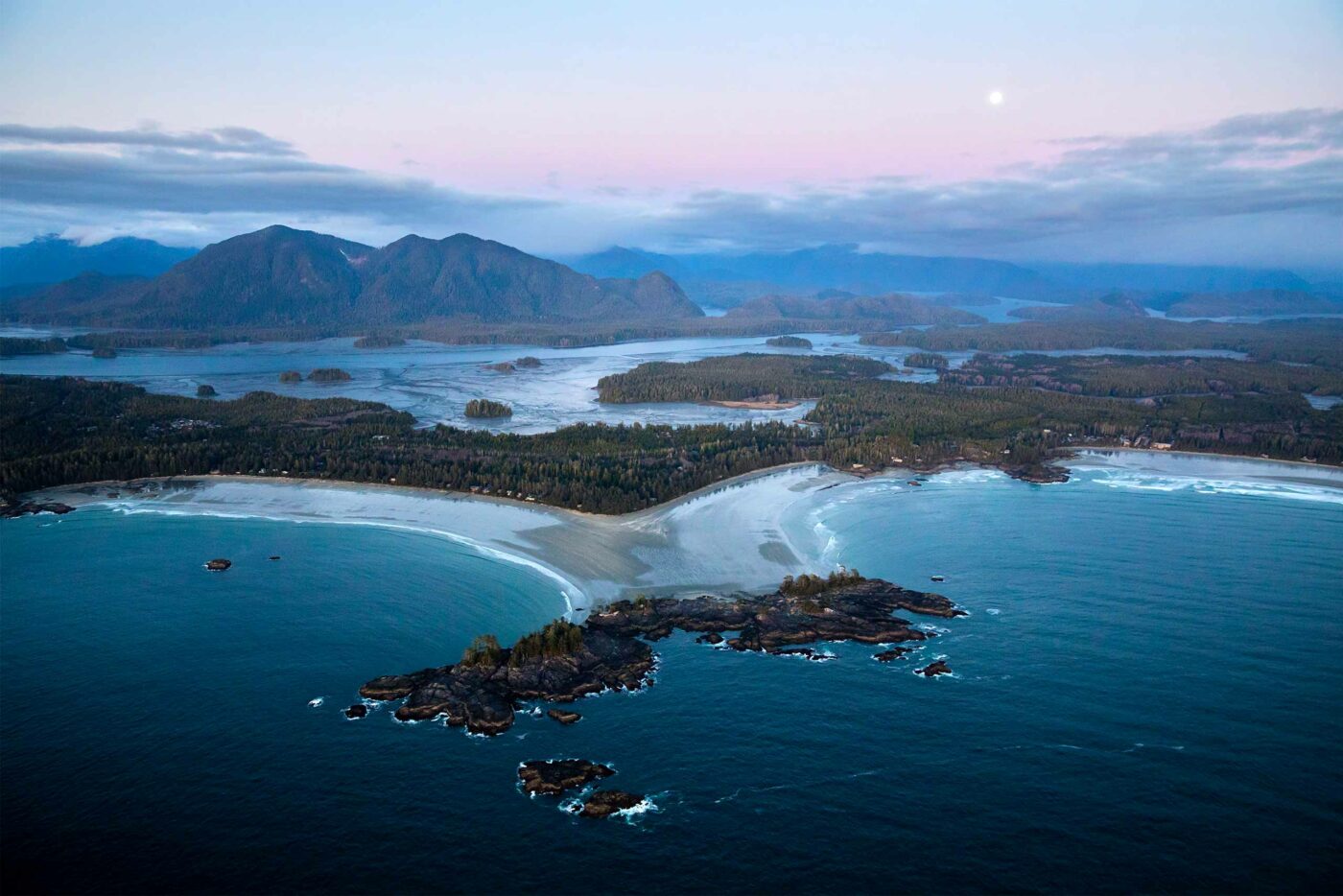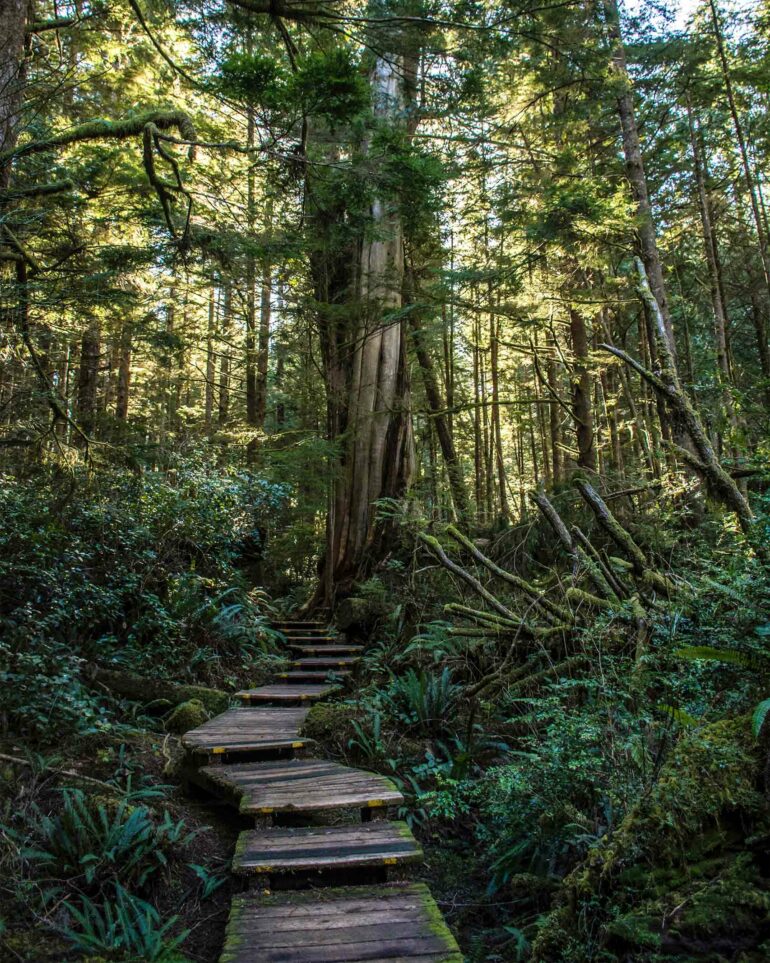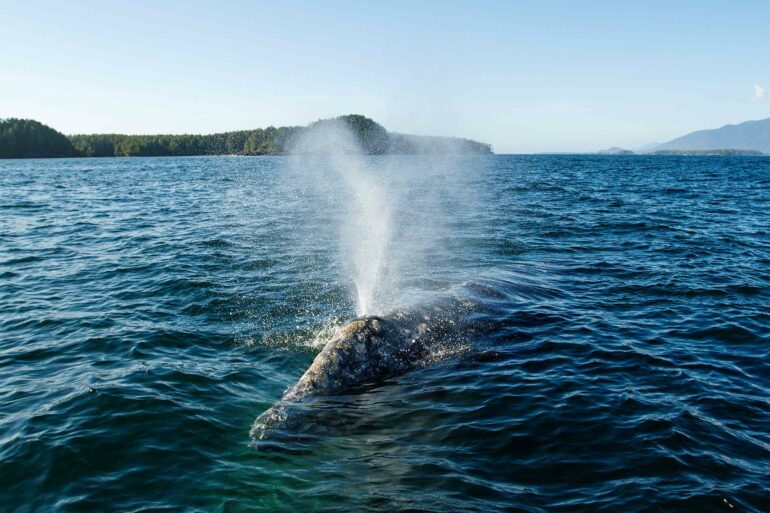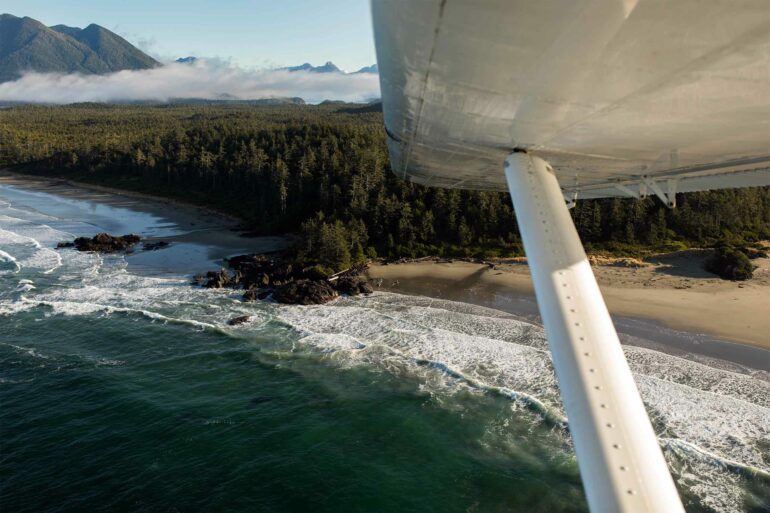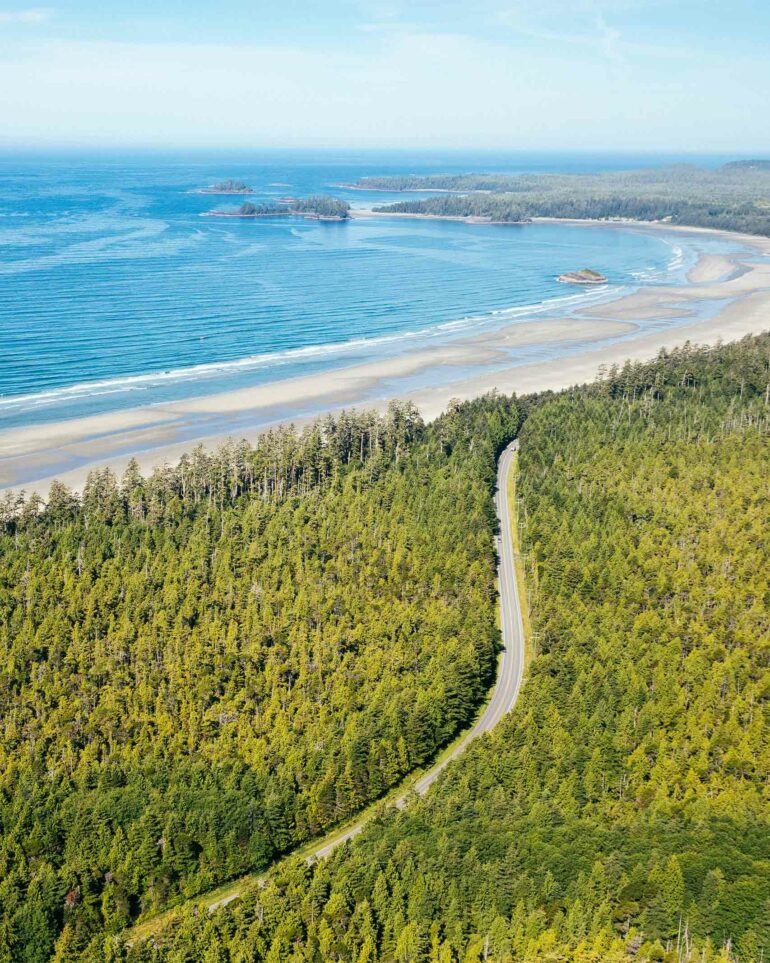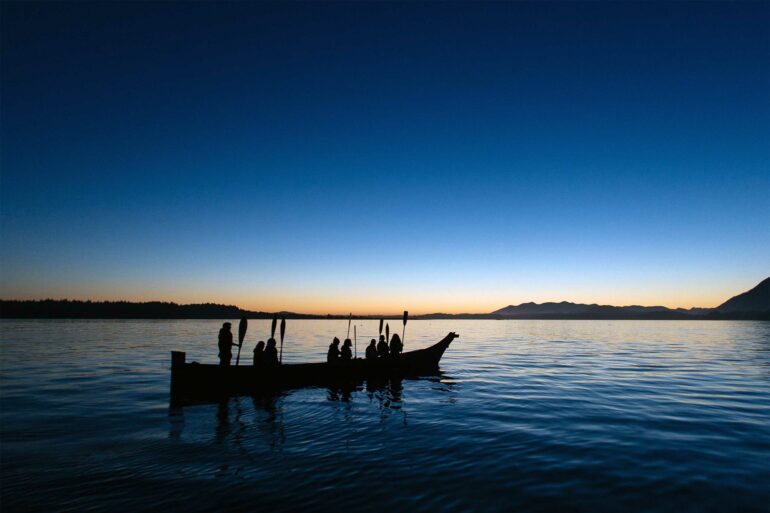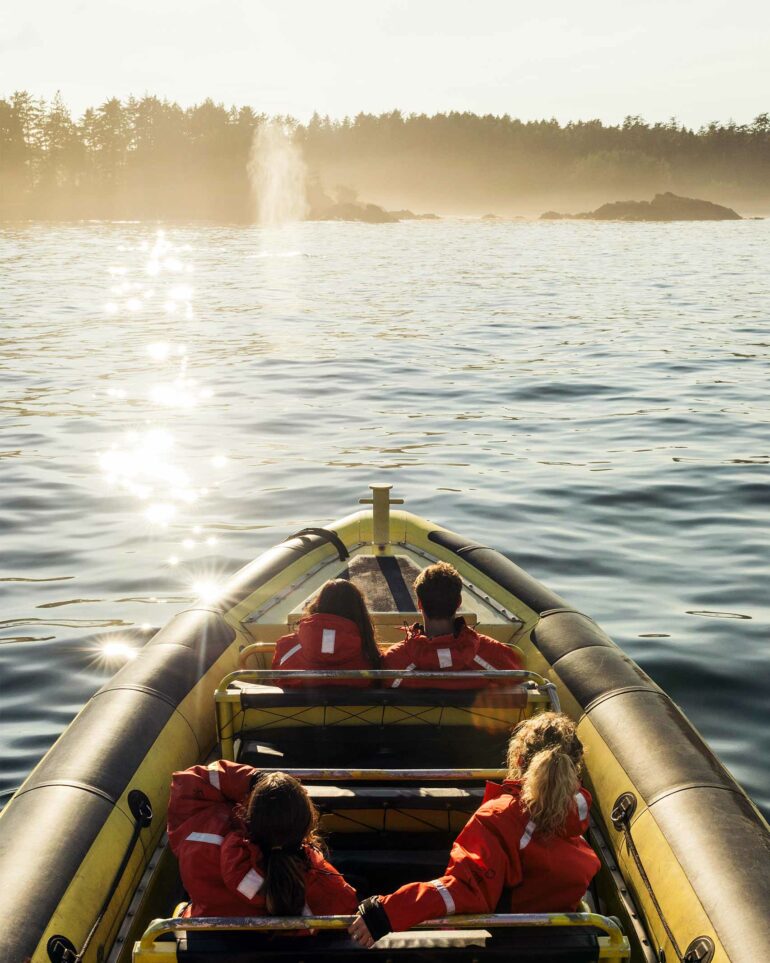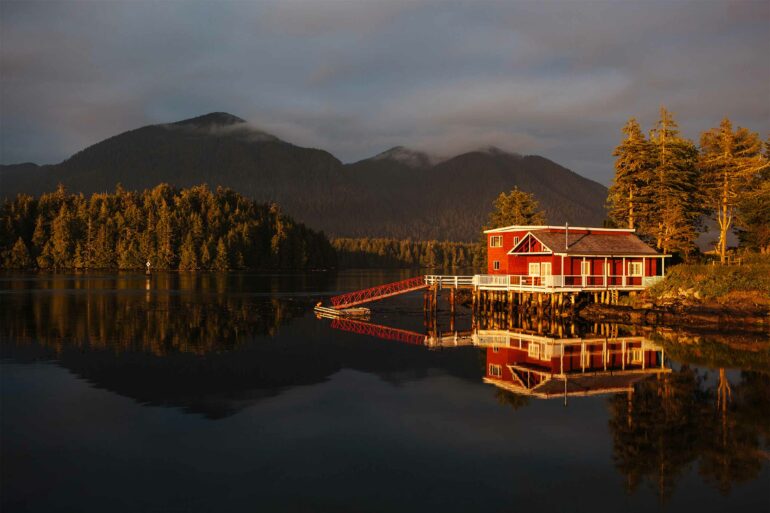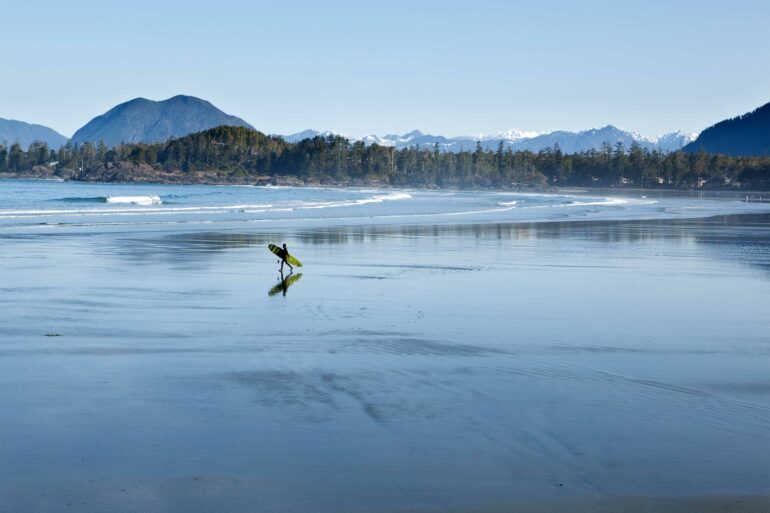Once a rough-edged logging and fishing community, far-flung Tofino, on Vancouver Island’s Pacific West, has evolved into a genteel place where nature, wellness and messing about on the water are ruling passions. Brandon Schultz samples the tiny town’s sky-high feel-good factor.
It’s not my first time receiving a massage in a forest, but there’s something unique about this one. The others were given by large spas, often connected to resorts and using the forest backdrop as a pleasant marketing point, but Stillwater Nature Spa is an intimate operation nearly as focused on the trees as the treatment. To reach the spa’s sole tent, I travel a meandering path through the forest and, though it’s technically not far, the frequent twists are delightfully disorienting, redirecting my mind from thoughts of the day to full awareness of the surrounding environment. As I climb a few wooden steps to cross a fallen tree that has been incorporated into the journey rather than removed, the last shred of ‘real life’ slips from my mind. By the time I reach the end, where I’m greeted by a luxe, white safari tent complete with a furnished wooden porch and a shock of flowers, I feel like I’ve discovered the good witch’s cottage at the end of a fairytale forest trek.
Mary Helena founded Stillwater in 2019 with the goal of treating the mind and soul as much as the body, and her devotion to environmental stewardship is a natural fit for this serene setting. The subtle sounds of rustling leaves and twittering birds are lulling, but it’s the comforting scents of the forest, even over the organic massage oils, that truly ground me here. It’s like I’m experiencing the Japanese therapy of forest bathing while receiving this massage, and I’m not sure if this was entirely intentional or partly a by-product of a general Tofino attitude. On this remote coast of Vancouver Island, nature is beyond adored. It’s also respected and protected, and the residents and visitors of this enclave almost seem to seek its approval as much as its bounty.
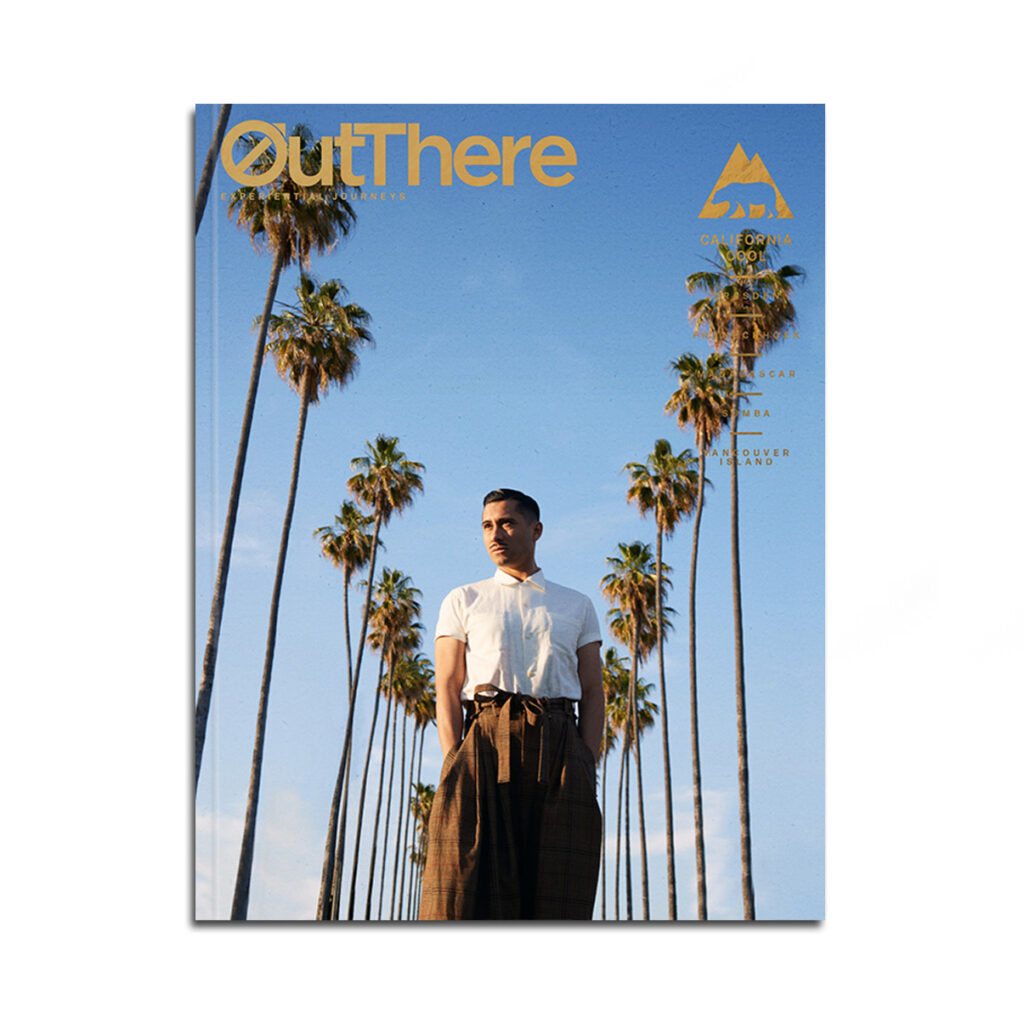
This story first appeared in The California Cool Issue, available in print and digital.
Subscribe today or purchase a back copy via our online shop.
Vancouver Island isn’t hard to reach from mainland Vancouver, the largest city of western Canada’s British Columbia. A ferry takes just a couple hours and there are several small airports on the island’s closest shore. But reaching Tofino is another story. It’s situated across the island at the tip of a peninsula on the western coast and is accessible by just one main road. The additional drive through towering old-growth temperate rainforest ranges from three to five hours in warm weather, and increases considerably in wintry conditions. You don’t come here by chance.
Remote though Tofino may be, it caters to a more affluent clientele, so there is a quicker way to land in this secluded paradise, and this is how I arrived. Vancouver International Airport’s segregated Terminal 1 is for private planes and a couple of select regional carriers, and it’s here I board a 20-seater for a 45-minute flight to Tofino-Long Beach Airport, 20 minutes from town.
“We don’t have security here,” says the check-in agent when I drop my bag for the flight. “Just be back 20 minutes before take-off.” When I board, I catch a glimpse of the neighbouring hangar for Million Air. Landing, I enter the one-room airport and a woman announces, for anyone interested, she’s just made a fresh pot of coffee.
I stay at the overtly pro-LGBTQI+ Hotel Zed (even its exterior is painted in muted multicolour), but there’s no lack of inclusivity elsewhere. Just a few decades ago a tough little logging and fishing town whose fortunes were turned around largely by surfing (and whose female surfing representation is world-leading), Tofino today is a forward-thinking and welcoming place – come as you are, if you can get here. The most luxurious stay is at The Wickaninnish Inn, a five-star Relais & Châteaux property, and the world’s most expensive glamping tents can only be reached by boat from Tofino to Clayoquot Wilderness Lodge. But it’s the next-level inclusivity and atypical amenities, such as a psychic’s den, that draw me to the hyper-designed Hotel Zed instead.
Swell Tofino is perhaps best known for its surfboard and stand-up paddleboard (SUP) rentals and lessons, but it also rents bicycles at an outpost connected to the hotel. If ever there was a bike-friendly destination, this is it, so I grab one and head the 2½ miles/4km into town on the spacious bike lane that follows the Pacific Rim Highway the entire way. It may be called a highway, but this is no busy street. I’m more in danger of being distracted by the countless rhododendrons blooming between soaring, centuries-old trees than by traffic.
Awash in wilderness
Tofino’s ‘downtown’ is tiny, to say the least, but there’s a surprising number of businesses here. Restaurants are seafood-centric, of course, but equally health-conscious. You’ll also find burgers and fried foods, but the same menus will include poke bowls and crispy tofu, and just about everything is locally sourced. Most shops are either hawking outdoor gear or souvenirs, but a pair of charming bookshops and a First Nations heritage museum drive home the small-town spirit.
On my ride, I discover Tofino has its own breweries for both beer and kombucha. Historically, I’ve not been a kombucha drinker, but it will come to replace water for me by the end of this visit. I won’t encounter a single food or beverage outlet that doesn’t feature at least a few flavours of Tofino Kombucha, and it becomes something of a scavenger hunt to taste them all before I leave.
Along the ride, an enticing shopping village hosts a handful of Tofino’s most beloved brands. Chocolate Tofino appears as a retro chocolatier in a woody shack, the Tofitian coffee shop has a line out the door that rarely diminishes, and the original Tacofino food truck is still parked in the lot (from its beginnings in Tofino, the brand now operates eight more restaurants in Canada). No one seems to know the name of this shopping centre, or if it even has one, but when asked why Tofino was in the name of absolutely every business, a Tofitian barista is momentarily incredulous. “We love this place,” she eventually offers, as though I should have come to this obvious conclusion myself. I suspect the name Topher, perhaps spelt Tofer, is more common among those who have visited here, and I’m positive there are many Tofino tattoos out there.
Tofino’s primary focus is hardly shopping, though, and bikes are welcome elsewhere too. One morning, with the tide out, I ride to a Chesterman Beach access point and am gobsmacked by the expansive shore. I’ve never seen so much flat sand entirely amenable to cycling and feel like a child let loose in a car park for the first time. After much pedalling up and down the beach towards nowhere, I finally follow the waterline to neighbouring Rosie Bay Beach. Here, caves that are otherwise entirely submerged by the tide are speckled by vibrant orange and purple starfish strewn among thousands of mussels and squishy anemones stretching high overhead. It’s hard to believe the tide varies this dramatically, but in under an hour I already find myself submerged to my ankles as it returns, and I sense it’s time to grab my bike and head back before it washes out to sea.
“A lot of younger people find their way here following a love of nature and the surf. Once they get here, it’s hard to leave. Some of them don’t”
But my aquatic adventures aren’t over yet. To come to Tofino without getting out on the water in some capacity or other would be unforgivable and, since I didn’t even take the ferry to get here, I head to Mackenzie Beach Resort to find Emre Bosut, owner of Swell, who will take my friends and me stand up paddleboarding. Like massages in the forest, I’ve done this plenty of times, all over the world, but never in a colder climate nor on the open ocean. Tofino will offer me another first here, and, honestly, I’m a little bit nervous – not of drowning, but of the Canadian cold.
Fortunately, the first order of business is gearing up in a wetsuit, which I’m promised will keep me warm and, although it feels like it takes longer to suit up and strip off than we ultimately spend on the water, I’ve never been more grateful for a garment. I don’t feel a tinge of cold throughout our exploration of nearby rock islands, as we practise manoeuvres such as spinning in place, or as we sit to watch two bald eagles fly overhead. Emre is training new instructors today and, despite their distinct personalities, they share the same disarmingly open attitude – one that speaks of gratitude rather than entitlement. There’s something of the carefree, California-surfer vibe about each of them, though they hail from several nations.
“A lot of younger people find their way here following a love of nature and the surf,” Bosut says, hinting at Swell’s primary business as a surf school and board rental. “Once they get here, it’s hard to leave. Some of them don’t.”
This is the same story I hear from several local business owners who arrived for a holiday and couldn’t imagine living elsewhere ever again. As a longtime New Yorker who’s seen so many drawn to my home city after visiting once, it strikes me that Tofino has the same effect on open spirits seeking the purest nature and the highest quality of mindful living. As I relax my leg muscles in a hot tub surrounded by forest back at the hotel, these two polar opposites seem shockingly similar in how fervently they’re idolised by the people who can’t give them up, and by those who return again and again to relive that inexplicable feeling that can’t be found anywhere else.
Photography by Sharissa Johnson, Shayd Johnson, Jeremy Koreski and courtesy of Tourism Tofino
Get out there
Do…
… take a wildlife-spotting tour. Tofino is known for whales, wolves and bears, and you’re guaranteed to see some from the safety of cruiser or zodiac tours.
… bring your dog. Tofino is a great destination for travelling pups, with plenty of dog-friendly businesses, beaches and even parts of the national park reserve. Legally, they must remain on leash in public places.
… get into the rainforest. Clayoquot Sound is a UNESCO biosphere reserve you don’t want to miss, and the Rainforest Trail in Pacific Rim National Park is suitable for all experience levels.
Don’t…
… bring your drone. Tofino is beyond photo-friendly, but the two small airports in the vicinity make most of Tofino a no-fly zone for drones
… forget a rain jacket. Tofino sees an average of 3300mm/130in of rainfall annually and Henderson Lake, about 110km/70 miles east, holds the North American record, with an average 7300mm/290in annually.
… think twice about visiting Tofino in the winter. It rarely snows here, and the cooler temps are a great excuse to see the natural hot springs. You can also catch some pretty impressive storms at this time of year.
The inside track
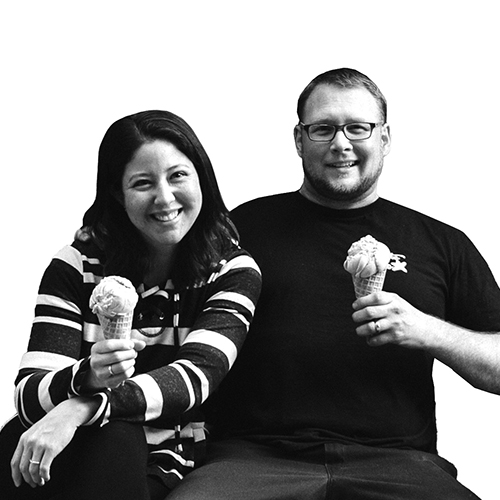
Kim and Cam Shaw were a landlocked couple who dreamed of the ocean while living in the prairies of Canada. After countless multi-day drives to faraway Tofino, they took the plunge and bought the local chocolate shop, Chocolate Tofino, to start a new life here.
Hit the trail
Hike Vargas Cone overlooking Canada’s premier surf beach, Cox Bay. At 100m/330ft high, it is an easy uphill hike, but it offers the best view per energy spent, especially on a sunny day when the water is full of surfers.
Take a shortcut
Skip the long line at Tacofino, Tofino’s famous taco truck, by eating at Tacofino’s Long Beach Golf Course location. They have a fun, unique menu and they’re just moments from the beach.
Set sail
Hire the water taxi from Jamie’s Whaling Station and get out for a sunset tour with Dennis from Clayoquot Connections. The best of Tofino can only be seen from the air or water.


